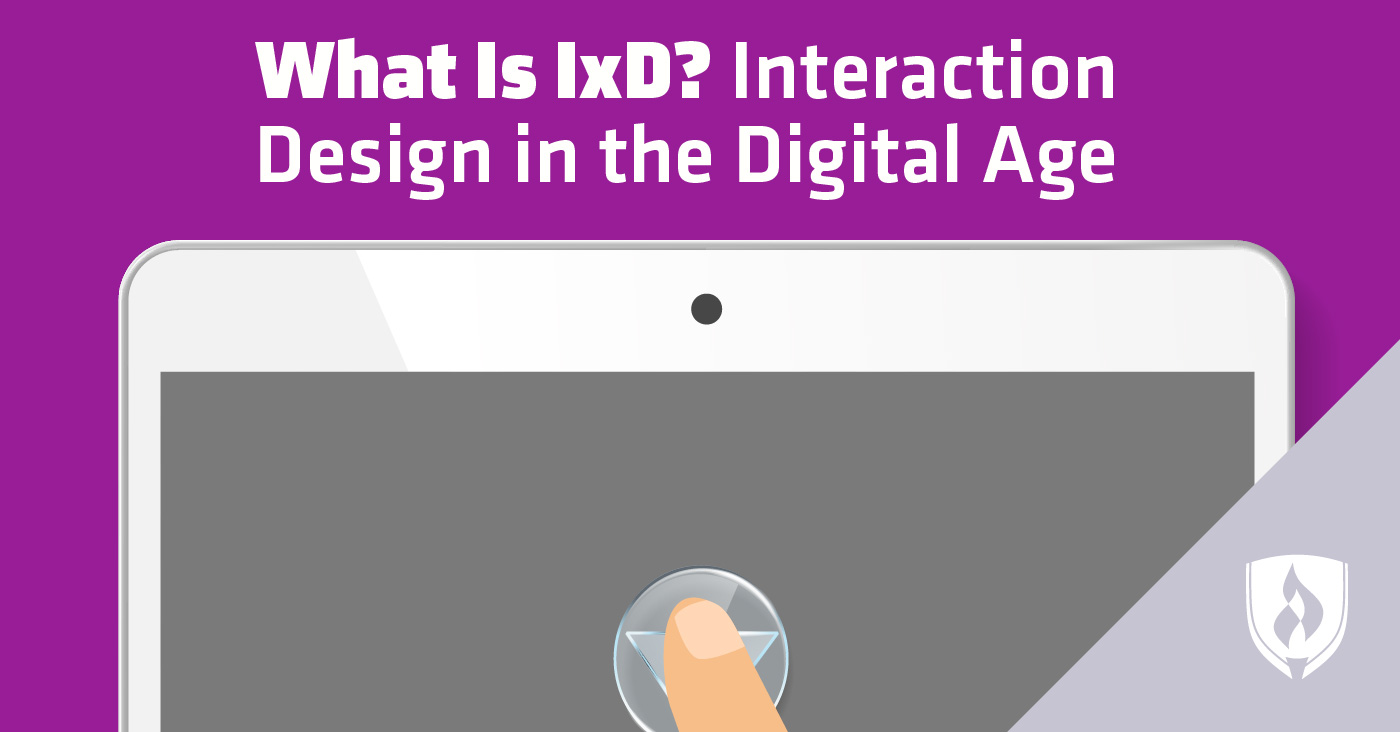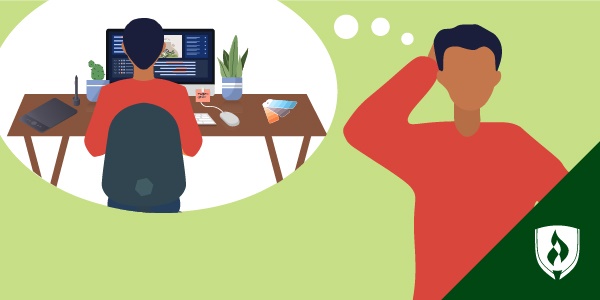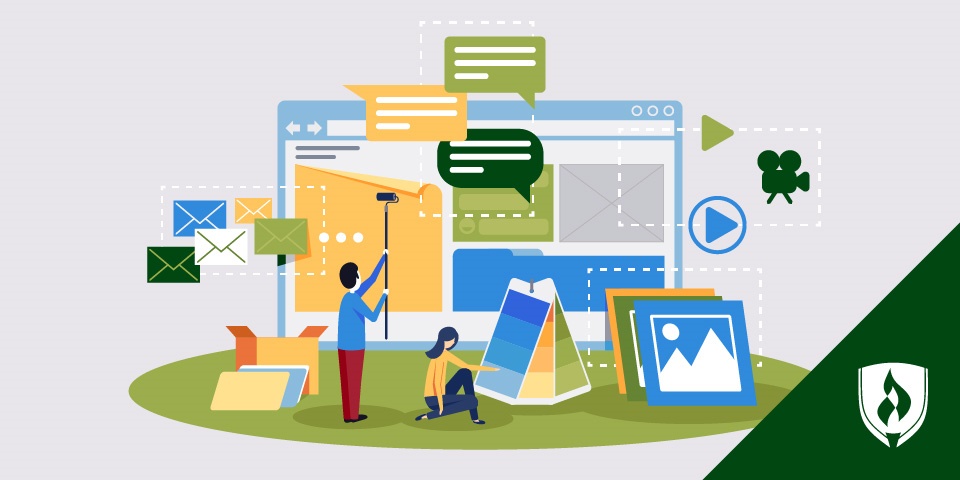What Is IxD? Interaction Design in the Digital Age
By Brianna Flavin on 04/11/2018

The words, “design” and “digital” are seldom far apart these days. Designers and artists in every field are growing in their appreciation of digital assets, and digital assets positively depend on designers to become intuitive products we can integrate into life.
Increasingly, these digital assets involve interaction. “Interactive media is changing so quickly,” says Crissy Bogusz, motion graphics and interaction designer. Bogusz says when she began her career, interactive media moved from web design, games, DVD and Blu-ray to mobile apps like Instagram and Snapchat.
But of course, interactive media like this doesn’t just spring into existence. There’s a reason certain applications catch fire and attract more users. Part of that reason is great interaction design—also called IxD.
When a platform is easy and intuitive to use, its design might seem extremely simple. But there is a lot going on under the surface to make it feel easy. “Most people don’t understand that complex interactions are needed for good design,” says Mike Palazzo, designer and developer at DefinedLogic.
When you start to realize that every product has a user who needs to be understood and accommodated in the design—you start thinking more like an IxD designer.
But what is IxD?
“IxDesign is based on the creation and development of visuals needed to help make an interactive project function,” Bogusz explains. “As a designer, for example, my job on an interactive product is to create aesthetics that help communicate to the user how that media platform works.”
Interaction design creates a visual communication that will guide the user through the format. You could think of it like artwork that functions as a map in disguise, seamlessly showing the user what to do and where to go. For example, a double arrow on the edge of a screen indicates there is more information to be found in that direction, or buttons that expand or collapse includes additional information. The goal of an interaction designer is to make the actions needed to access information or navigate a site or application as intuitive as possible—that feeling where something “just works” and makes sense to users.
IxD vs. UX design
If you’ve heard of user experience design (UX design) before, these ideas might sound familiar. On one level, they are all about the same thing—helping users use the product. But there is some divergence between the two.
“IxD gets the user from A to B by visually presenting them cues using graphic design, text or even video and motion graphics,” Bogusz explains. “UX conceptualizes the A and B.”
Basically, IxD visually supports UX. UX designers imagine an experience for the users, often based on studying analytics about the users and guessing how they will interact with the media, Bogusz says. “IxD is the visual construction of that concept.”
What do interaction designers do?
So how do the experts in IxD make the magic happen? Palazzo says weekly tasks can vary widely. He spends time developing creative solutions through sketches, designing individual components or building out entire design systems for an application or website.
“Interaction design is more about just working on media that has an interactive element,” Bogusz emphasizes. “A designer can work on buttons, for example, but an interaction designer will know where exactly those buttons will need to be placed based on the information and knowledge they have about their user and intuitive interactive design.”
Bogusz’s weekly tasks usually include assessing the assets she will be working with (imagery, video and text) and collating them into a visual story that will engage the audience.
“I enjoy looking back on a project that started with sketches on paper, grew into prototypes and became a fully realized, interactive application or website,” Palazzo says. “All designers know the satisfaction of looking back on their work and knowing they had a hand in creating something from nothing but an idea.”
“I love being able to learn new and emerging technology,” Bogusz says. Since interactive media changes so quickly, interaction designers need to stay on their toes, learning new tools as they come up. “It's always fascinating and enlightening. There's a significant merge right now between social media and interactive media.”
What skills and credentials do you need to be an interaction designer?
A review of almost 3,000 job postings for interaction designers revealed some important specialized skills employer want to see.* Here were the top five:
- Adobe Creative Suite
- UX Wireframing
- Prototyping
- User Interface (UI) Design
- Interaction Design
Employers are also looking for designers with some education on their resumes. Of the 1,700 jobs that listed educational requirements, a solid 87 percent were looking for candidates with a Bachelor’s degree.
“Interactive design requires not only technical knowledge about interfaces and usability, but strong design and aesthetics,” Bogusz says. It’s a mixture of artistry and technology that is bound to satisfy both the creative and analytical sides of your mind.
“My number-one piece of advice to anyone entering the multimedia world is to learn various skills,” Bogusz says. “Multimedia is just that; it requires someone who understands, for example, design, audience and social media.” For example, do you know Illustrator as well as Photoshop? Can you do video editing as well as graphic design? “So many roles require varied skills, and most employers assume they won’t find someone with all these skills—so if you have them, then you will stand out.”
The ideal combination
For the right people, interaction design can be the perfect mashup of specialized skill with foundational graphic design abilities. It brings together both analytical and artistic mindsets, and it encompasses a wide range of new technologies that are always growing.
What is IxD? Ultimately, it’s a career choice ahead of the curve in terms of technology and design. Does interaction design intrigue you? Then you’ll want to check out the Web and Interactive Design Specialization program page to see how Rasmussen College can provide you with a foundation of design knowledge and skills to get started in this intriguing niche of design and development.
*Burning-Glass.com (analysis of 2,985 interaction designer job postings, Feb. 01, 2017 – Jan. 31, 2018)




